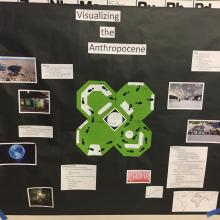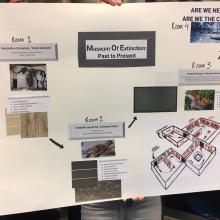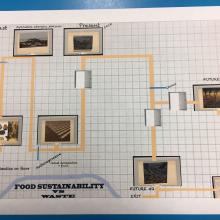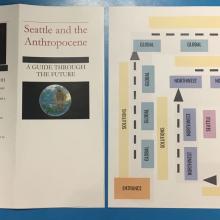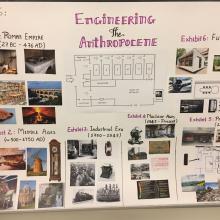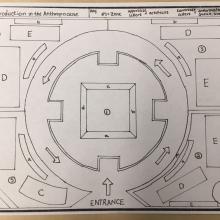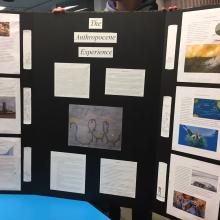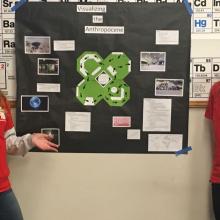In 2016 the Deutsche Museum in Munich, Germany, was one of the first museums worldwide which dedicated an entire exhibit to the phenomenon of the Anthropocene. The term first coined in 2000 by climate scientist and Nobel prize winner Paul Crutzen and Eugene Stoermer describes a new historical epoch in which humankind has gained a never experienced geological force and the ability to irreversibly change the environment. All our actions have an impact and have begun to leave footprints on Earth. While the original Anthropocene exhibit in Munich focused on the display of science and technology topics that shaped this new era, students designed their own exhibitions in which they decided which aspects best represented the human impact in this groundbreaking age.
Team 1: Their technology museum “Visualizing the Anthropocene” lets their visitor experience the effects of human-induced climate change. In the center of their exhibit is a virtual reality room that simulates, for example, rapidly rising sea water levels, and increasing temperatures.
Team 2: The team’s “Museum of Extinction” displays the disappearance of animal species throughout Earth’s history. Beginning with the natural extinction of species such as the wooly mammoth, the museum also features information about human-caused extinction as well as the growing number of endangered animal species such as the monarch butterfly. The audience exits the exhibit through a mirror room in which signs ask “Who’s next?” pointing to the human responsibility of species’ extinction and the possibility of human disappearance in the future.
Team 3: The group’s exhibit “Food Sustainability vs. Waste” showcases mile stones in human food production such as the introduction of agriculture and monocultures or the growing industrial food production in, for instance, a food can factory. All these forms of food productions contributed to environmental problems and the shaping of the Anthropocene, and resulted in growing amounts of waste.
Team 4: Their exhibit “Climate Change in the World and Seattle” leads the visitors on a spiral walk in which they learn about the effects of climate change on a global and local scale. On their way back through the spiral room, displays on the wall will also propose solutions for the individual to stop and to slow down climate change.
Team 5: Their virtual reality simulation “Trapped in the Anthropocene” lets visitors experience the changing living conditions in the age of the Anthropocene. Among others, the IMAX dome simulates how the flames and smoke of wild fires feel.
Team 6: The group’s museum “Engineering in the Anthropocene” displays the changes of our human-built houses in Western cultures over time. Beginning with the Roman empire, the visitors walk through kitchens of different historical eras to see the changing habits of preparing food and the growing technical dependency in recent centuries.
Team 7: Their exhibit “Food Production in the Anthropocene” educates middle-school children about the harmful effects of modern food production such as the emergence of monocultures or the meat industry. Additionally, their exhibit proposes ideas how the individual can change their eating habits in order to make a positive impact.
Team 8: The team’s museum “The Anthropocene Experience” displays historical mile stones from all over the world that lead to the emergence of the Anthropocene such as the overpopulation in Asia, or the deforestation of the Amazonian forest in Brazil.

